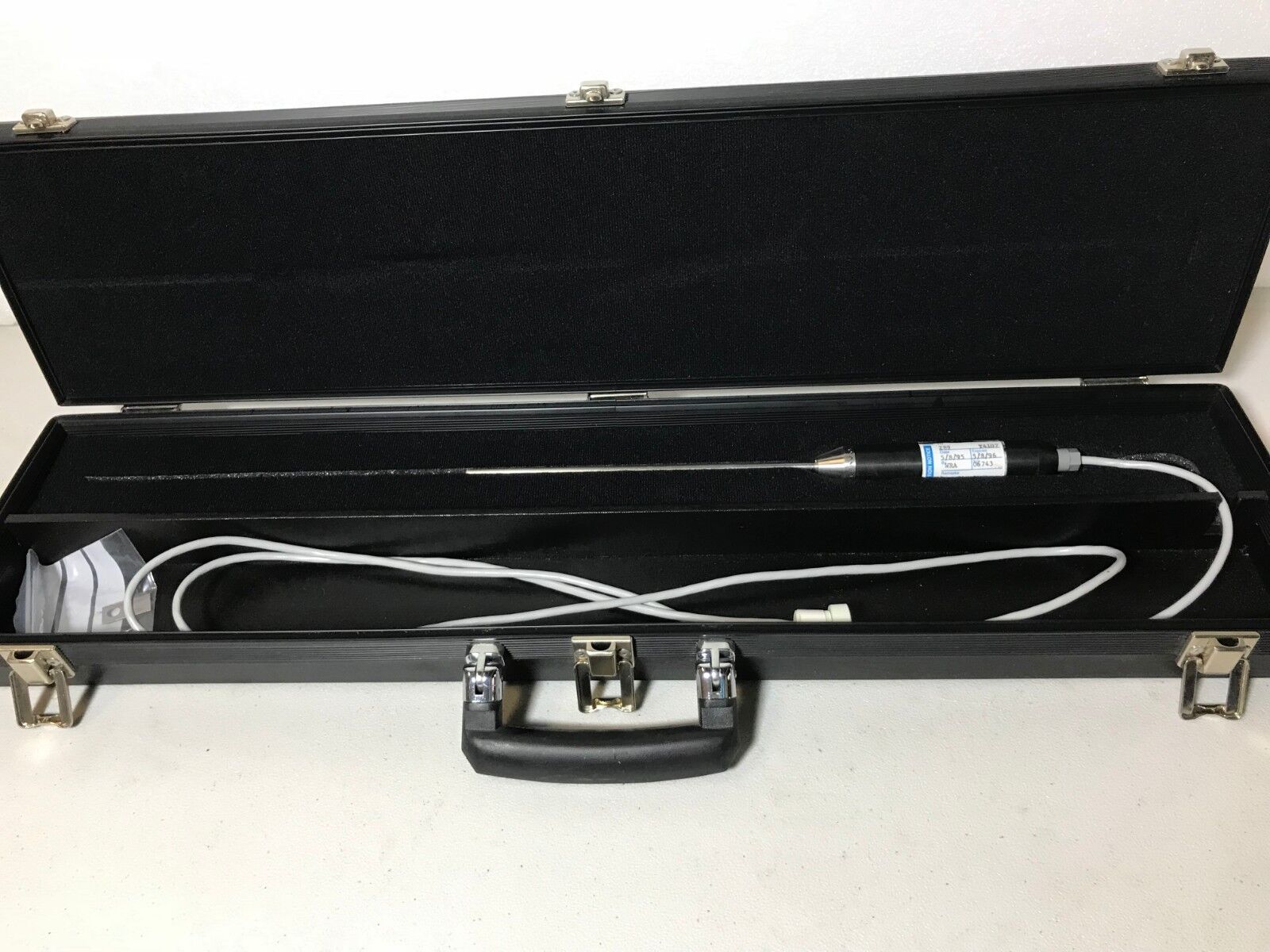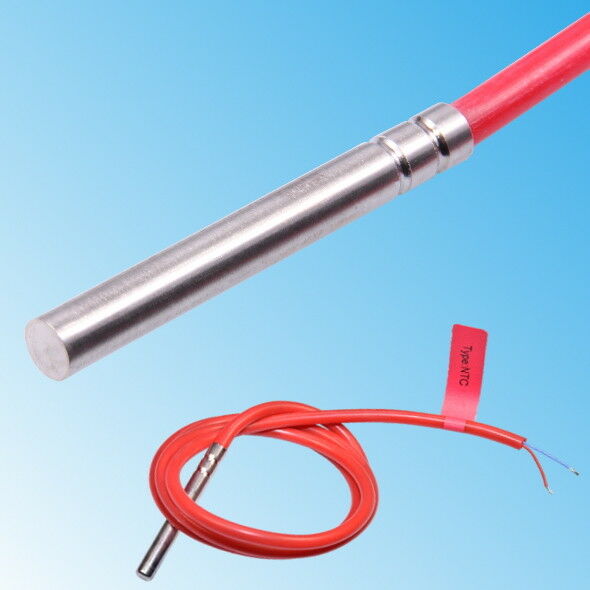-40%
Sensing Devices Ltd.Precision Platinum Resistance Thermometer PRT100 #1/ Case
$ 262.41
- Description
- Size Guide
Description
Feel free to contact us for additional information through ebay mail,
or directly at:
[email protected]
or at (201) 592-1864.
Sensing Devices Ltd. PRT100
Precision Platinum Resistance Thermometer
S511/3/R100
with
Original
Carrying Case
We Ship Internationally!
Please confirm shipping cost with us. (Ebay shipment cost estimate may well be too high.)
There are 11 units remaining available in stock.
Please contact us if you are interested
in ordering multiple units and we will set up a special auction for you.
Model:
Sensing Devices Ltd.
Precision Platinum Resistance Thermometer PRT100 / S511/R100
S/N: 289 (21760) (This is representative - the s/n of the unit provided will be different.)
Power:
205-225 / 105-127 V
48-440 Hz / Approx 12 VA
30 day warranty
N&R Scientific Company, Inc. - also known as NR Scientific, is the owner and seller of the item offered for sale. Our primary warehouse and refurbishment facility is located in Palisades Park, New Jersey. We are minutes from Manhattan, and local to all 3 New York City Area Airports.
Items located at our primary facility in Palisades Park can generally be made available for acceptance testing/inspection prior to shipment. We have been providing the highest quality refurbished and fully guaranteed equipment worldwide.
You can purchase with complete confidence that the equipment will be provided in excellent cosmetic and perfect operational condition.
From the Manufacturer:
General Characteristics:
A platinum resistance thermometer (PRT) is a thermometer constructed from a high purity platinum element (wire-wound coil or thin film) placed in a tube of metal or glass and sealed with an inert atmosphere and/or mineral insulator. Two, three, or four leads are connected to the element and are used to provide for the measurement of the electrical resistance of the element.
Some of these characteristics are:
Wide temperature Range (–260°C to 1000°C)
Electrical resistance is typically between 0W and 400W and depends on temperature
Excitation current is typically 1mA
Stable over time
Stable over temperature
Shallow slope (i.e. 0.4W/°C for a 100W PRT)
Relatively easy to measure
Relatively easy to calibrate
Commercially available in many configurations
The list above shows that PRTs are suitable for use over a wide temperature range. This is true, but actual design and construction will differ in instruments intended for different ranges. No single instrument will be suitable for use over the entire range shown above.
In calibration, the electrical resistance is measured at several temperature points and fitted to a mathematical expression. The number of calibration points depends on the range and accuracy desired but, because the temperature response of platinum is relatively linear and very well known, fewer calibration points are required for a given range compared to other sensor types.
Also, because of the shallow slope, the readout used for the resistance measurement need not have a large range. PRTs, like any probe, have immersion requirements which vary from configuration to configuration. Often, the required immersion is not stated or specified. Since PRTs are used in so many different applications, we are presented with a large variety of shapes, sizes, and types.
Although the basic calibration requirements are the same, these various configurations pose different problems in the laboratory. We must solve these problems satisfactorily to provide a proper calibration. Therefore, we must understand the requirements to an extent that allows us to adapt our process, if necessary, to accommodate a new or unusual configuration.
Instruments, Standards, and Apparatus:
Calibration is performed by measurement of the resistance of the unit under test (UUT) while it is exposed to a temperature. Fundamentally, four instruments are required as follows:
Reference probe
Readout for the reference
Readout for the UUT
Temperature source
Platinum sensors care manufactured to comply with a standard curve within a specified tolerance. The international standard, IEC 751, is published in the UK as BS EN 60751. The Class A tolerance for a PT100 sensor is ± 0.25 ºC over the range 0 ºC to ±200 ºC. However, better uncertainties can be achieved if the sensor is suitably protected in a steel probe and calibrated individually.
For the highest accuracy, special glass-sheathed standard PRTs, usually of 25 ohms at 0 °C, are calibrated at the fixed points of the International temperature scale 1990 (see above). The ITS-90 specifies equations to relate the resistance to temperature and, using these, uncertainties can be achieved of 0.001 °C or better. Standard PRTs can be used from temperatures as low as 259 °C up to 660 ºC, or even, 962 ºC, with some increase in uncertainty and of loss of reproducibility.
NRID: (U) C: 3rd Ais: Cart A/D-1











